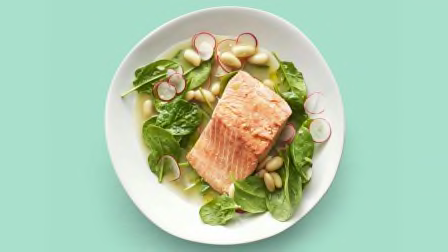Carbs That Are Good for You
The right ones keep weight under control and make you feel great

These days, carbs are blamed for everything from weight gain to heart problems. Given this bad rap, it’s no wonder that many people are cutting back on pasta, bread, and potatoes.
Processed vs. Whole Carbs
You often hear of carbohydrates being described as simple and complex. Simple carbs consist of chemical chains of one or two sugar molecules. Complex carbs, made up of longer molecular chains, are starches or fiber.
But the distinction isn’t all that helpful when you’re deciding which foods to eat. Not all simple carbs are unhealthy, and not all complex carbs are good for you. And the two types can be found in the same foods. For example, fruit contains natural sugars (simple carbs) along with fiber (a complex carb).
Instead, think processed vs. whole. Processed carbs are added sugars and white flour, (and products made with them), white rice, potato chips, and fries. These are broken down and turned into energy quickly, causing a rapid spike in blood glucose levels, and often are low in nutrients and fiber. Over time, these spikes can lead to illness-causing chronic inflammation. In a 2010 study published in the American Journal of Clinical Nutrition, older women with the highest intake of quickly digested carbs were nearly three times as likely to die of an inflammatory disease, such as heart disease, as those who consumed the least.
Carbs in the form of whole foods— vegetables, fruits, whole grains, and legumes—are the healthiest, says Morrow. They’re digested more slowly, which helps prevent the blood sugar swings caused by refined carbs.
The fiber they contain also protects against a variety of diseases, and helps keep you full. One 2019 review of research published in The Lancet found that people who ate the most fiber-rich foods were 15 to 30 percent less likely to develop heart disease, type 2 diabetes, and colorectal cancer, or die from heart disease or stroke. What’s more, fiber boosts "good" bacteria in the gut, which are linked to healthy digestion, better immune function, and overall health.
Resistant starches, found in oats and legumes (as well as cold pasta and rice), may have the same benefits. "These starches are similar to fiber," says Nate Wood, MD, a chef and an instructor of medicine at Yale School of Medicine in New Haven, Conn. "They aren’t digested in the small intestine, so they don’t raise blood sugar." Instead, they pass into the colon, where they feed the healthy gut bacteria.
How Many Carbs Do You Need?
The Department of Agriculture’s Dietary Guidelines for Americans recommends 45 to 65 percent of your daily calories from carbs. That’s 225 to 325 grams if you eat 2,000 calories a day. Aim to get nearly all of them from whole foods, says Wood. Keep added sugars to a minimum, too. The American Heart Association recommends no more than 25 grams a day for women and no more than 36 grams for men.
Should you go lower? On many popular low-carb diets, 25 to 30 percent of daily calories is the limit. "If you’re trying to lose weight, low-carb diets do work in the short term," says Wood. But there’s no long-term data showing that they’re safe and effective, and "for a lot of people, it’s not sustainable, and they gain the weight back," he says.
Even most people with blood glucose issues, such as diabetes, don’t need to go low-carb. "One of the most-studied diets for metabolic health, the Mediterranean diet, gets 40 to 50 percent of calories from carbs," says Morrow. Of course, needs vary depending on your individual health, body, and activity level, she says.
Easy Ways to Keep Track
You don’t need to count every single carb you eat. Instead, follow these easy steps:
Choose whole grains. According to a 2021 Journal of Nutrition study, middle-aged and older adults who ate at least three servings of whole grains daily had smaller increases in blood pressure, blood sugar, and waist size over an 18-year span than those who ate less than half a serving.
Focus on fruits and vegetables. Some are lower in carbs, such as spinach (1 gram per cup), broccoli (6 grams per cup), and strawberries (11 grams per cup). But there’s no need to steer clear of those higher in starches and sugars, such as potatoes (26 grams per cup) or grapes (27 grams per cup). Just pay attention to the serving size, says Morrow.
Mix in plant-based protein. Beans, nuts, and tofu serve up protein alongside carbs. One 2024 study found that women who got more plant-based protein saw notably less heart disease, cancer, and diabetes as they aged.
Pair carbs with protein and/or fat. This can slow digestion, for steadier blood sugar, says Morrow. For instance, if you have crackers or pretzels, serve them with cheese, peanut butter, or hummus.
Spot sneaky added sugars. These include sugar, syrups, and fruit juice, which supply calories and carbs but little nutrition. A diet high in added sugars ups the risks for diabetes, heart disease, and frailty. Check the "added sugars" line on Nutrition Facts labels, not just on desserts but also on less obvious foods like cereal, pasta sauce, salad dressing, and bread.
Editor’s Note: This article also appeared in the May 2024 issue of Consumer Reports On Health.




















